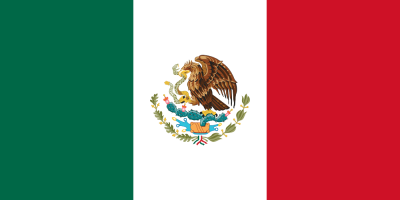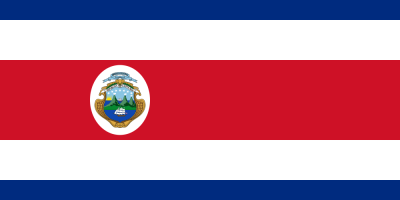Saint Vincent and the Grenadines flag color codes is a simple yet vibrant tricolor design consisting of green, gold, and blue bands with an additional motif in the center. Understanding the precise Saint Vincent and the Grenadines flag color codes allows accurate digital rendering and reproduction for creative purposes. Whether displayed publicly, used in apparel prints, or integrated digitally, having the official HTML HEX, RGB, PANTONE, HSL, CMYK, HWB, and NCOL colors for the Saint Vincent and the Grenadines flag color codes enables faithful visual representations. This article will cover the specific color values and formats behind the green, gold, blue, and central motifs seen on this Caribbean country’s iconic banner. With this reference, rendering the symbolic flag of Saint Vincent and the Grenadines is straight-forward for brand designers, merchandise creators, events coordinators and marketers alike.
Table of Contents
What are the colors of Saint Vincent and the Grenadines flag?
The flag of Saint Vincent and the Grenadines consists of three vertical bands of blue, yellow, and green. From the hoist side (the side attached to the flagpole) to the fly side (the free end), the colors are arranged as follows:
- Blue: The leftmost band is blue, symbolizing the sky and the surrounding waters.
- Yellow: The middle band is yellow, representing the golden sunshine and the warmth of the people.
- Green: The rightmost band is green, symbolizing the lush vegetation of the islands.
Additionally, there are three green diamonds arranged in the center of the yellow band. These diamonds represent the Grenadine Islands, a chain of smaller islands that are part of the country. The national flag of Saint Vincent and the Grenadines was adopted on October 21, 1985.
Saint Vincent and the Grenadines flag color codes & Color Names:
BLUE
| Color Model | Value |
|---|---|
| HTML | #0067CF |
| HEX | 0067CF |
| RGB | 0, 103, 207 |
| PANTONE | 286 C |
| HSL | 210°, 100%, 40% |
| CMYK | 100%, 50%, 0%, 19% |
| HWB | 210°, 0%, 19% |
| NCOL | Blue |
Yellow
| Color Model | Value |
|---|---|
| HTML | #FCD116 |
| HEX | FCD116 |
| RGB | 252, 209, 22 |
| PANTONE | 1235 C |
| HSL | 45°, 100%, 53% |
| CMYK | 0%, 17%, 91%, 1% |
| HWB | 45°, 1%, 1% |
| NCOL | Yellow |
Green
| Color Model | Value |
|---|---|
| HTML | #4CA64C |
| HEX | 4CA64C |
| RGB | 76, 166, 76 |
| PANTONE | 7484 C |
| HSL | 120°, 38%, 47% |
| CMYK | 55%, 0%, 55%, 35% |
| HWB | 120°, 55%, 35% |
| NCOL | Green |
What is the meaning of colors in the Saint Vincent and the Grenadines flag?
The colors of the Saint Vincent and the Grenadines flag hold symbolic significance, representing various elements related to the natural environment and characteristics of the nation. Here is the meaning associated with each color:
- Blue: The blue color in the flag represents the sky and the surrounding waters of Saint Vincent and the Grenadines.
Significance: It reflects the nation’s connection to the Caribbean Sea and the Atlantic Ocean, emphasizing the importance of maritime activities, coastal landscapes, and the skies above.
- Yellow: The yellow color symbolizes the golden sunshine and the warmth of the people.
Significance: It represents the tropical climate of the islands, highlighting the bright and sunny weather that is characteristic of the region. The warmth of the yellow also metaphorically reflects the welcoming nature of the Vincentian people.
- Green: The green color in the flag represents the lush vegetation and the fertile lands of Saint Vincent and the Grenadines.
Significance: This color underscores the agricultural richness of the islands, including the fertile soils that support a variety of flora. It also symbolizes the natural beauty and environmental diversity of the nation.
The three green diamonds in the center of the yellow band represent the Grenadine Islands, acknowledging the importance of this chain of smaller islands as part of the country’s territory.
Overall, the colors of the Saint Vincent and the Grenadines flag come together to symbolize the nation’s natural beauty, maritime heritage, warm climate, and the richness of its land and vegetation.
Explore More Flag Colors:
FAQs: Frequently Asked Questions:
What country owns St Vincent and the Grenadines?
Saint Vincent and the Grenadines is an independent sovereign nation, and it is not owned by or under the direct control of another country. It is a member of the Commonwealth of Nations and gained independence from the United Kingdom on October 27, 1979. As an independent country, Saint Vincent and the Grenadines has its own government, headed by a Prime Minister, and it exercises full sovereignty over its domestic and foreign affairs.
What is St Vincent famous for?
Saint Vincent and the Grenadines, a Caribbean nation, is known for several features that contribute to its appeal as a tourist destination and cultural identity. Here are some aspects for which Saint Vincent is particularly famous:
Beautiful Landscapes: Saint Vincent is renowned for its lush and picturesque landscapes. The main island, Saint Vincent, features volcanic terrain, tropical rainforests, and stunning coastal areas. The Grenadines, a chain of smaller islands, offer pristine beaches and crystal-clear waters.
La Soufrière Volcano: The La Soufrière volcano is a prominent natural landmark on the island of Saint Vincent. While its eruptions have shaped the island’s topography, the surrounding areas provide opportunities for hiking and exploring the volcano’s geothermal features.
Beaches and Marine Life: The Grenadine Islands, including popular destinations like Bequia, Mustique, and Tobago Cays, are known for their white-sand beaches, vibrant coral reefs, and diverse marine life. These locations attract visitors for snorkeling, diving, and sailing.
What religion is St Vincent Island?
Saint Vincent and the Grenadines is a religiously diverse country, and various religious affiliations are present among its population. The major religion in Saint Vincent and the Grenadines is Christianity, with the majority of Christians being Protestant. The main Protestant denominations include Anglicanism, Methodism, and Seventh-day Adventism.
The Roman Catholic Church is also a significant Christian denomination in the country, and there are communities of other Christian groups.
Additionally, there are small communities of other religious traditions, including Hinduism and Afro-Caribbean syncretic religions that incorporate elements of African and Caribbean spiritual practices.
Which language is St Vincent speak?
The primary language spoken in Saint Vincent and the Grenadines is English. English serves as the official language and is used in government, education, and official communication. It is the language of instruction in schools and is widely understood and spoken by the majority of the population.
Is St Vincent and the Grenadines a low income country?
Saint Vincent and the Grenadines is classified as an upper-middle-income country by the World Bank. The World Bank classifies countries into income groups based on their gross national income (GNI) per capita. The classification includes low-income, lower-middle-income, upper-middle-income, and high-income categories.
It’s important to note that income classifications can change over time based on economic developments and other factors. Saint Vincent and the Grenadines has made progress in various economic indicators, but like many countries, it faces challenges related to economic diversification, external shocks, and natural disasters.
What is St Vincent currency?
The official currency of Saint Vincent and the Grenadines is the Eastern Caribbean Dollar, abbreviated as XCD or EC$. The Eastern Caribbean Dollar is the official currency of eight countries in the Eastern Caribbean Currency Union, which includes Saint Vincent and the Grenadines. The other countries using the Eastern Caribbean Dollar are Antigua and Barbuda, Dominica, Grenada, Saint Kitts and Nevis, Saint Lucia, Anguilla, and Montserrat.
Is St Vincent expensive?
The cost of living and the perceived expense of Saint Vincent and the Grenadines can vary depending on individual preferences, lifestyle choices, and the specific location within the country. Here are some factors to consider:
Accommodation: The cost of accommodation, whether renting or staying in hotels, can vary based on the type of lodging and its location. Luxury resorts in popular tourist destinations may be more expensive than budget accommodations.
Dining: Dining expenses can vary based on where you choose to eat. Restaurants in tourist areas or upscale establishments may have higher prices compared to local eateries or street food.
Transportation: Transportation costs, including local transportation and rental cars, can impact overall expenses. Renting a car, especially in popular tourist destinations, may add to the budget.
Activities: The cost of activities and excursions, such as guided tours, water sports, or entrance fees to attractions, can contribute to the overall expense.
Currency Exchange Rates: Foreign visitors should consider currency exchange rates, as fluctuations can affect the cost of goods and services.
Do you need a passport to go to St Vincent?
Yes, a passport is generally required for international travel to Saint Vincent and the Grenadines. Travelers from most countries will need a valid passport to enter the country. Additionally, some travelers may also be required to obtain a visa, depending on their nationality.
It’s important to check the specific entry requirements for Saint Vincent and the Grenadines based on your citizenship. Requirements can vary, and travelers are advised to contact the nearest embassy or consulate of Saint Vincent and the Grenadines or check with the official government website for the most up-to-date and accurate information on entry and visa requirements.
What is the most popular food in St Vincent?
Saint Vincent and the Grenadines has a rich culinary tradition that reflects its Caribbean heritage. The cuisine is influenced by African, European, and indigenous Caribbean flavors. Here are some popular foods in Saint Vincent:
Roasted Breadfruit: Breadfruit is a starchy fruit that is often roasted or boiled and served as a side dish. It is a staple in Vincentian cuisine and can be enjoyed with fish, meat, or other accompaniments.
Stewed Saltfish: Saltfish (salted and dried cod) is a common ingredient in Caribbean cuisine. Stewed saltfish is a popular dish in Saint Vincent, often cooked with tomatoes, onions, peppers, and various seasonings.
Callaloo Soup: Callaloo, a leafy green vegetable similar to spinach, is used to make a hearty soup. The soup may include other ingredients such as okra, coconut milk, and various seasonings.
Fried Jackfish: Jackfish, a local fish, is often fried and served with a side of breadfruit, plantains, or rice. The fish is seasoned and fried to a crispy texture.













